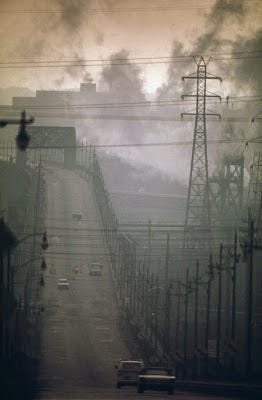Climate Change

Human beings have become an increasingly powerful environmental force over the last 10,000 years. With the advent of agriculture 8,000 years ago, we began to change the land. And with the industrial revolution, we began to affect our atmosphere. The recent increase in the world’s population has magnified the effects of our agricultural and economic activities. But the growth in the world population has masked what may be an even more important human-environmental interaction: While the world’s population is doubling, the world’s urban population is tripling. Within the next few years, more than half the world’s population will be living in urban areas.
The level and growth of urbanization differ considerably by region. Among developing countries, Latin American countries have the highest proportion of their population living in urban areas. But East and South Asia are likely to have the fastest growth rates in the next 30 years. Almost all of the future world population growth will be in towns and cities. Both the increase in and the redistribution of the earth’s population are likely to affect the natural systems of the earth and the interactions between the urban environments and populations.
Effects of Urbanization:
As cities grow in number, spatial extent, and density, their environmental and ecological footprints increase. Urban expansion that takes place in forests, wetlands, and agricultural systems leads to habitat clearing; degradation, and fragmentation of the landscapes. Urban lifestyles, which tend to be consumptive, requiring great natural resources and generating increasing amounts of waste also lead to increased levels of air, water, and soil pollution.
Approximately 97% of the earth’s water is stored in the oceans, and only a fraction of the remaining portion is usable freshwater. When precipitation falls over the land, it follows various routes. Some of it evaporates, returning to the atmosphere, some seeps into the ground, and the remainder becomes surface water, traveling to oceans and lakes by way of rivers and streams.
Air pollution often plagues industrialized cities, particularly during their early development. Episodes of high levels of sulfurous smog killed or sickened thousands in Donora in 1948, as well as in London in 1952. Other cities- primarily in the industrialized regions of the United States and Europe-also suffered from notoriously bad air quality. These events were the result of very high emissions of sulfur dioxide, smoke, and other particles during stagnant, foggy weather conditions.
Urbanization has led to reduced physical activity and unhealthy nutrition. The World Health Organization predicts that by 2020, non-communicable diseases such as heart disease will account for 69 percent of all deaths in developing countries. Another urbanization-related threat is infectious diseases. Air travel carries bacteria and viruses from one country to the next. In addition, people relocating from rural areas are not immune to the same diseases as long-time city residents, which puts them at a greater risk of contracting a disease.
The cost of living in urban areas is very high. When this is combined with random and unexpected growth as well as unemployment, there is the spread of unlawful resident settlements represented by slums and squatters. The growth of slums and squatters in urban areas is even further exacerbated by fast-paced industrialization, lack of developed land for housing, a large influx of rural immigrants to the cities in search of a better life, and the elevated prices of land beyond the reach of the urban poor.
Originally published at https://climatecrisisaroundtheglob.blogspot.com.